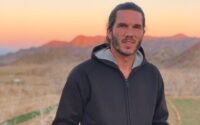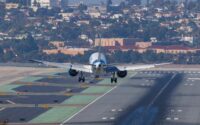Why MONA festivals are luring cool kids deep Down Under
In February, Gen X darlings Pavement headlined for a crowd of craft beer drinkers that spilled across a muddy lawn outside one of the most influential art museums in the world.
Earlier, the thumping bass of sex-positive electro-punk icon Peaches drew the scene away from experimental dance shows and an installation wall of anatomically accurate vaginas.
Dressed in carefully curated tatters and post-Sydney Pride rainbow gear, these very cool kids were gathered not in Brooklyn — but deep down under, outside Hobart, Tasmania.
Since opening in 2011, a visit to the Museum of Old and New Art (MONA) has been badge of honor.
I first heard of the museum in New York. It was “the coolest art museum in the world,” a friend told me. I heard about Wim Delvoye’s startling work “Cloaca Professional,” a complex machine that functions as an animal digestive system and literally turns food into feces right in front of you.


The founder of MONA, Tasmania-born David Walsh, is equally unconventional. His horse racing betting syndicate made him a fortune. He then spent $75 million renovating the Moorilla Museum of Antiquities into what the museum is today: a labyrinthine campus for daring art and events carved deep into the exposed stone cliffside. It has its own high-concept restaurant, a vineyard, party ferries and a brewery. A hotel is in the works.
Unlike other museums, which become a line item on an itinerary, MONA (tickets from $23) and its two annual festivals, Mona Foma and Dark Mofo, have become a prime mover of Tasmanian tourism, giving the small speck of land just north of Antarctica serious cultural cred.


“Our signature concert in 2009 was with Nick Cave and the Bad Seeds,” said Brian Ritchie, the artistic director of both MONA events and bassist for the Violent Femmes. “It announced, ‘Okay, we’re the new kids on the block.’ We were instantly successful.”
Today, the museum brings over 500,000 visitors a year to Tasmania. The multi-day festivals, which occur near the summer and winter solstices, bring tens of thousands more.
“The average stay is nine days,” said Ritchie. “If people are coming to the festival, they’re also seeing some of the countryside, surfing and doing wine visits. It has helped brand Tasmania in people’s minds.”

MONA has virtually non-stop music and events, but its next big party, Mona Foma, happens at the height of the Southern Hemisphere summer. What will it look like? They don’t know.
“We’re never sure quite what’ll happen,” the museum’s website states (ticket prices are TBD). “Past years have seen music on lawns, in concrete boxes small and large, in a planetarium and in the odd church — art basically everywhere in the form of lasers, a table tennis-playing robot and more.”
So if you’ve done the ultra-commercialized music festival circuit, why not book something really far-flung on spec? It’s guaranteed to be the most original scene you’ve been to yet.
“We just we act,” said Ritchie. “We keep doing new things all the time and the festivals are constantly evolving. They’re not repetitive, like a lot of festivals are. We have the freedom to change.“


